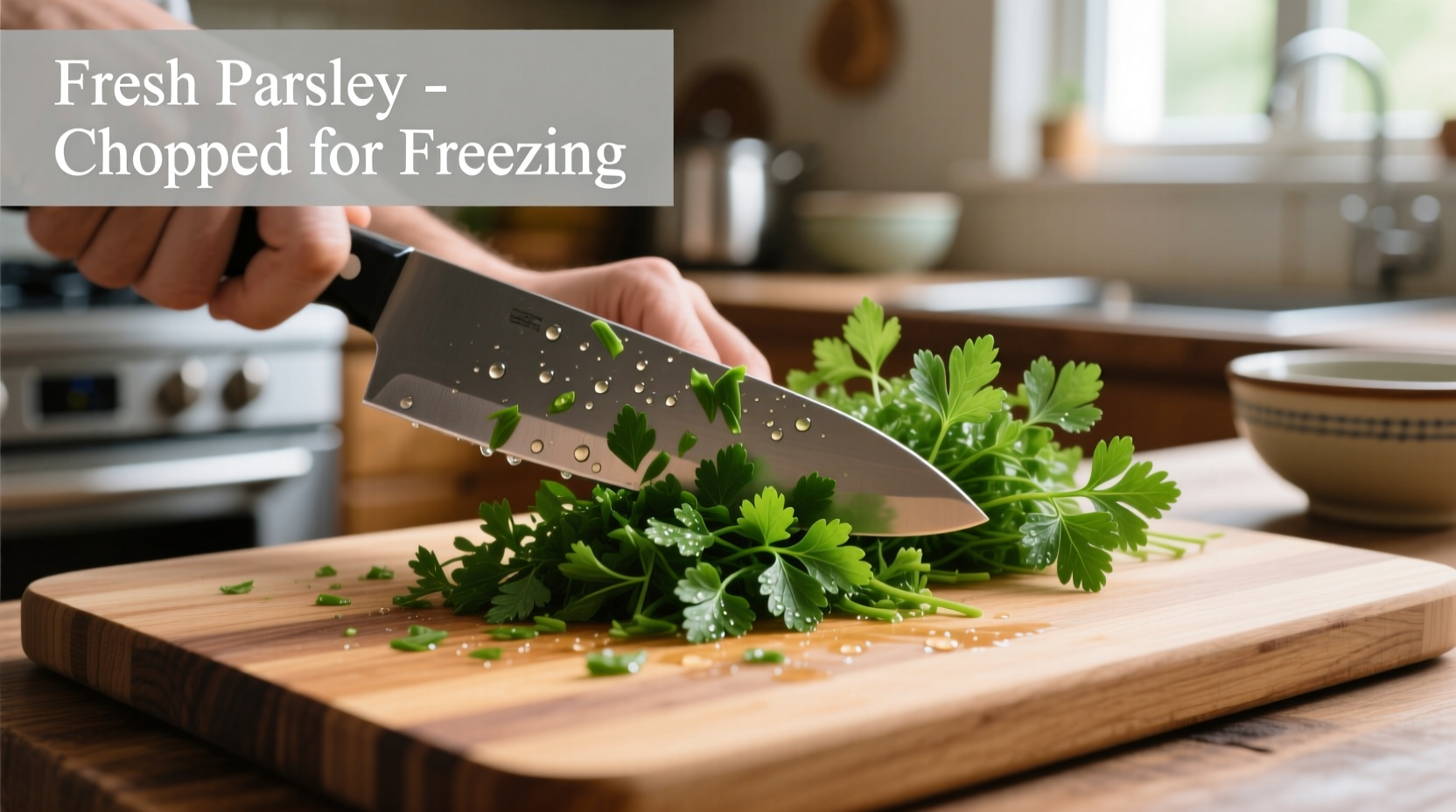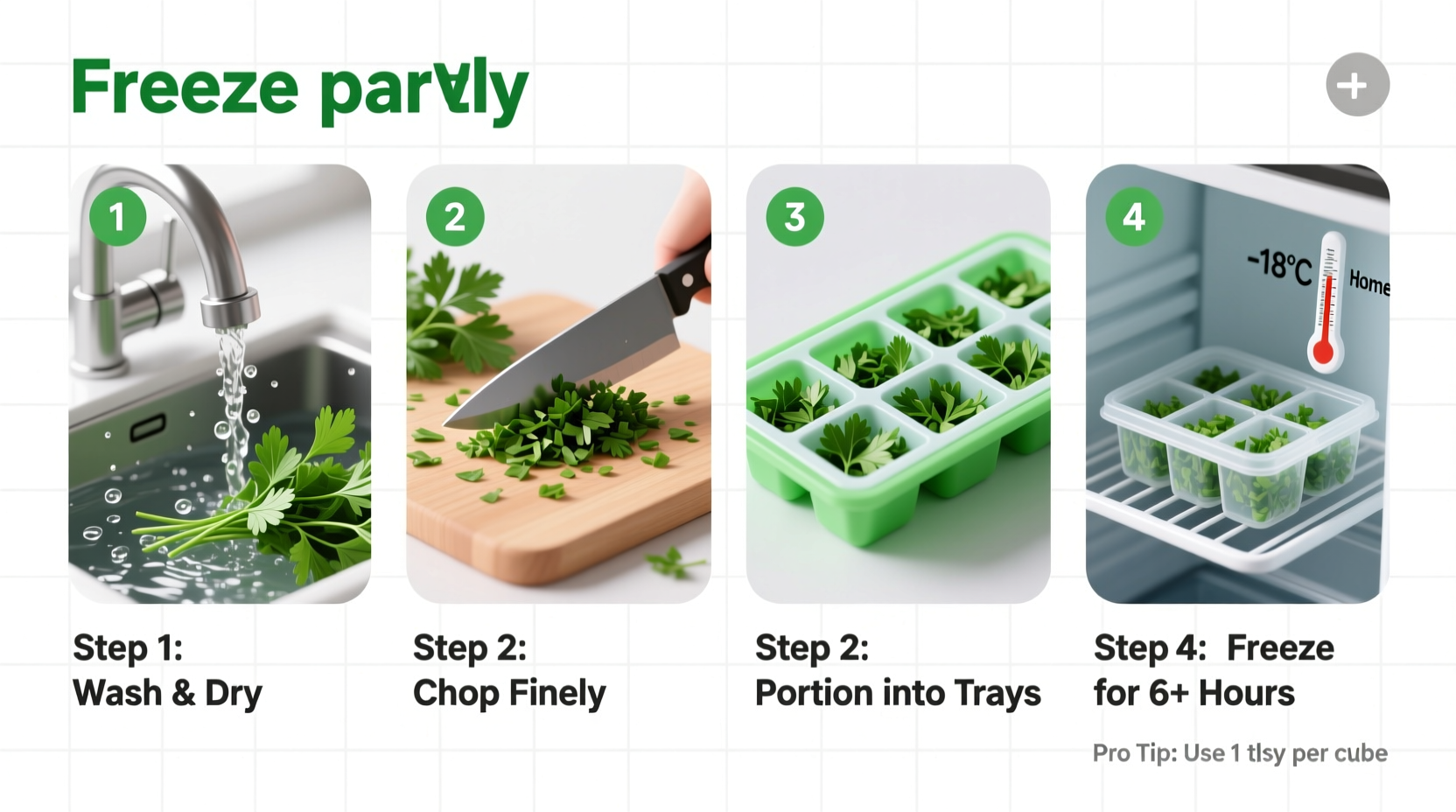Freeze fresh parsley properly by washing, drying thoroughly, and using either the dry freeze method (chopped and spread on a tray before transferring to airtight containers) or the ice cube tray method (packed in oil or water). Properly frozen parsley maintains 90% of its flavor for 4-6 months when stored at 0°F (-18°C) or below.
Why Freezing Parsley Beats Drying Every Time
Most home cooks reach for dried parsley when fresh isn't available, but that's a flavor tragedy. Freezing preserves up to 95% of parsley's volatile oils compared to drying's 40% retention, according to USDA food preservation research. When you freeze parsley correctly, you'll have vibrant green herbs ready for soups, stews, and sauces all winter long — no more limp, brown grocery store bundles.
What You'll Need Before Starting
Successful parsley freezing begins with proper preparation. Don't skip these critical steps:
- Fresh parsley — Choose bunches with crisp, dark green leaves (avoid yellowing)
- Large bowl — For the ice water bath method
- Salad spinner — Essential for thorough drying (paper towels alone won't suffice)
- Sharp knife — For clean chopping that minimizes bruising
- Airtight containers — Glass jars or vacuum-sealed bags work best
Step-by-Step Freezing Methods That Preserve Maximum Flavor
Dry Freeze Method (Best for Cooking Applications)
This professional chef technique preserves texture better than you'd expect:
- Wash parsley under cold running water, swishing gently in a bowl of ice water to remove grit
- Spin thoroughly in a salad spinner until leaves are completely dry — moisture causes ice crystals
- Chop leaves finely (stems contain more fiber and freeze poorly)
- Spread in a single layer on parchment-lined baking sheet
- Flash freeze for 2 hours until solid
- Transfer to labeled freezer bags, removing all air before sealing
Ice Cube Tray Method (Perfect for Ready-to-Use Portions)
For sauces and soups where precise measurements matter:
- Prepare parsley as above through chopping
- Pack cubes 3/4 full with chopped parsley
- Add either olive oil (best for Mediterranean dishes) or water (neutral flavor)
- Freeze solid (4-6 hours), then transfer cubes to storage bags
- Label with date and contents (e.g., "2 Tbsp parsley + oil")
| Freezing Method | Best For | Flavor Retention | Storage Duration |
|---|---|---|---|
| Dry Freeze | General cooking, seasoning | 90-95% | 6 months |
| Oil Cubes | Sauces, Mediterranean dishes | 95% | 4 months |
| Water Cubes | Soups, stews, braises | 85-90% | 3 months |
Avoid These 3 Freezing Mistakes
Even experienced cooks make these critical errors that destroy parsley quality:
- Skipping the drying step — Water causes freezer burn within weeks (USDA Food Safety and Inspection Service confirms moisture is the #1 cause of frozen herb degradation)
- Using regular plastic bags — Invest in freezer-specific containers; standard bags allow oxygen transfer that degrades flavor
- Freezing whole sprigs — Chopped freezes more evenly and thaws faster for cooking
When Frozen Parsley Works (and When It Doesn't)
Understanding context boundaries prevents kitchen disasters. Frozen parsley excels in cooked applications but has limitations:
- Perfect for: Soups, stews, sauces, marinades, roasted vegetables, compound butters
- Avoid in: Raw applications like tabbouleh or as fresh garnish (texture changes when frozen)
- Surprising use: Blend frozen parsley cubes directly into hot pasta sauces — they melt seamlessly
Storage Timeline for Maximum Freshness
Follow this professional kitchen timeline to ensure peak quality:
- Day 0: Harvest or purchase (use within 24 hours of buying for best results)
- Day 1: Wash, dry, and freeze using preferred method
- Month 1-3: Peak flavor period — use for important dishes
- Month 4-6: Still excellent for cooking, though slight flavor diminishment occurs
- After 6 months: Safe to eat but noticeably diminished flavor (USDA recommends discarding after 6 months)

Using Frozen Parsley Like a Pro
You don't need to thaw frozen parsley before cooking — that's the beauty of proper freezing. For best results:
- Add directly to hot liquids — the heat releases flavor instantly
- Use oil-frozen cubes in place of fresh in salad dressings (melt first)
- For baking applications, let cubes thaw slightly before mixing
- Never microwave frozen parsley — the texture turns to mush
Troubleshooting Common Freezing Issues
Solve these problems before they ruin your harvest:
- Blackened leaves: Caused by insufficient drying — always use a salad spinner
- Off flavors: Oxygen exposure — use vacuum sealing or water displacement method for bags
- Clumping: Flash freeze on tray before bagging to prevent this











 浙公网安备
33010002000092号
浙公网安备
33010002000092号 浙B2-20120091-4
浙B2-20120091-4